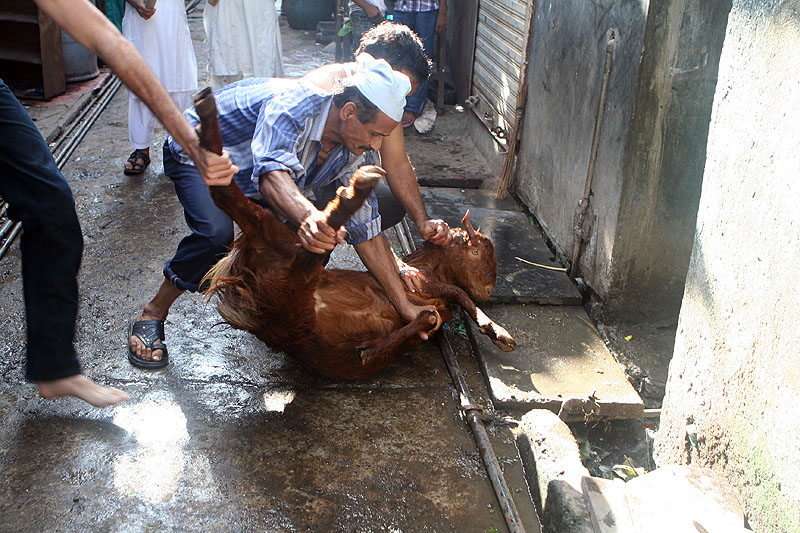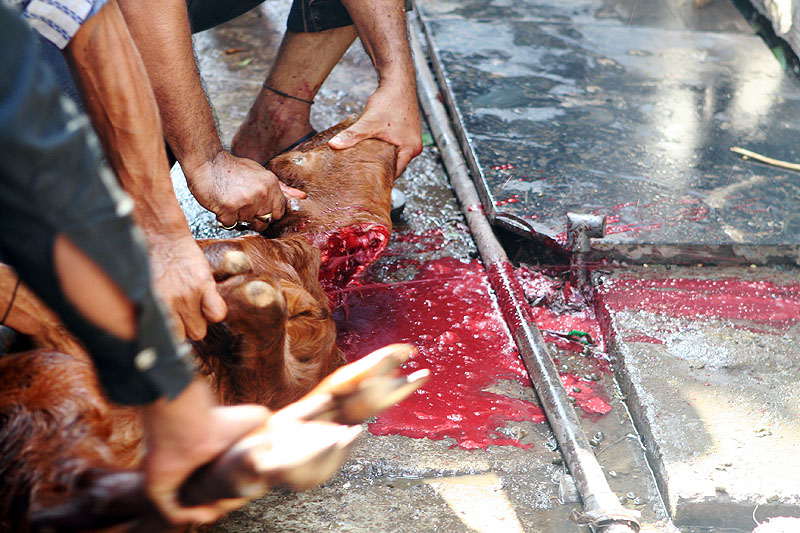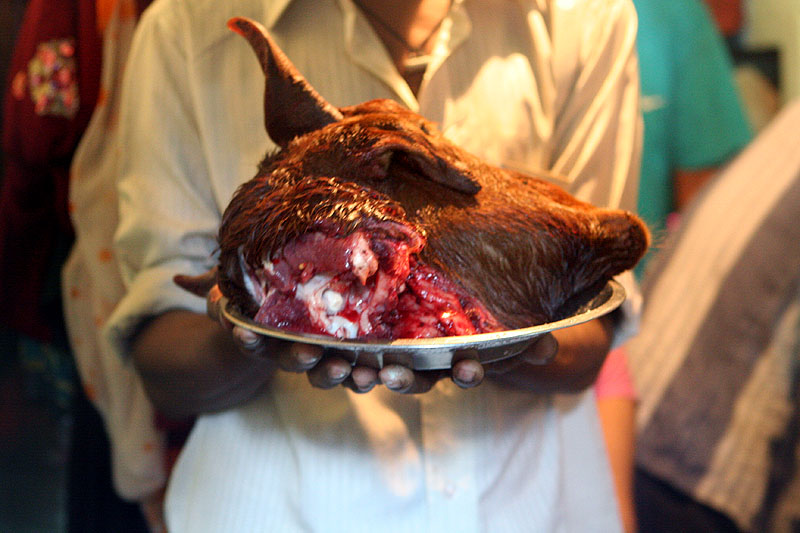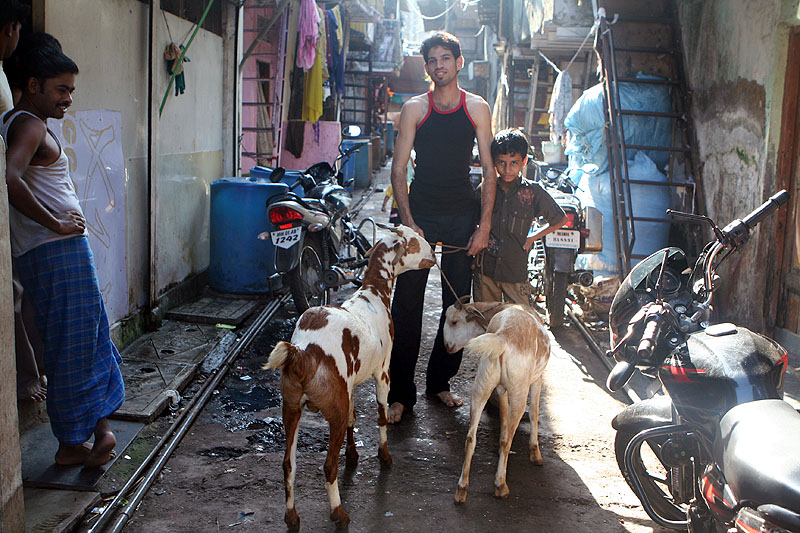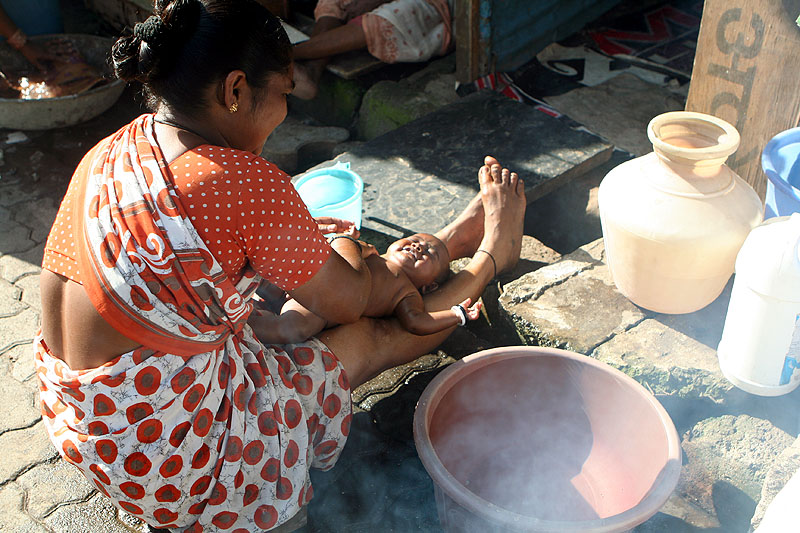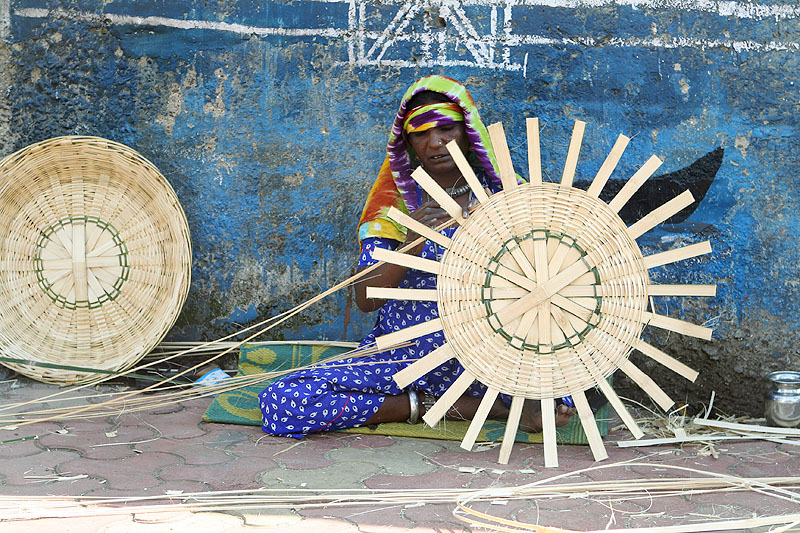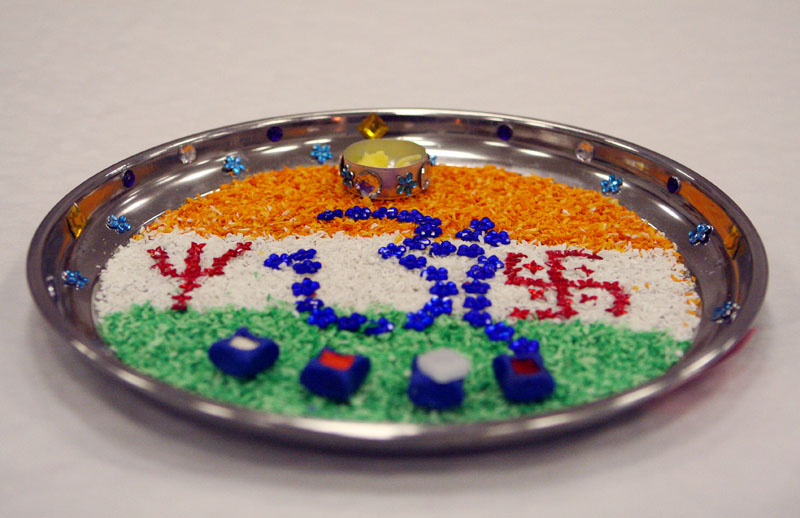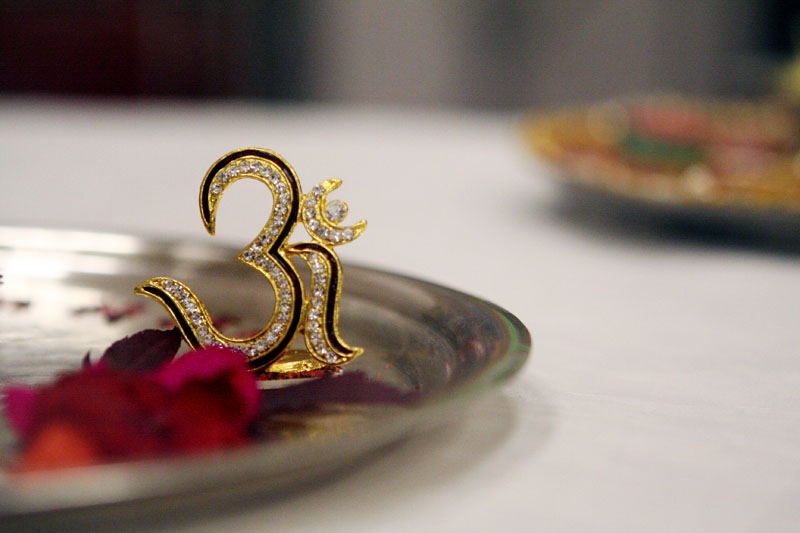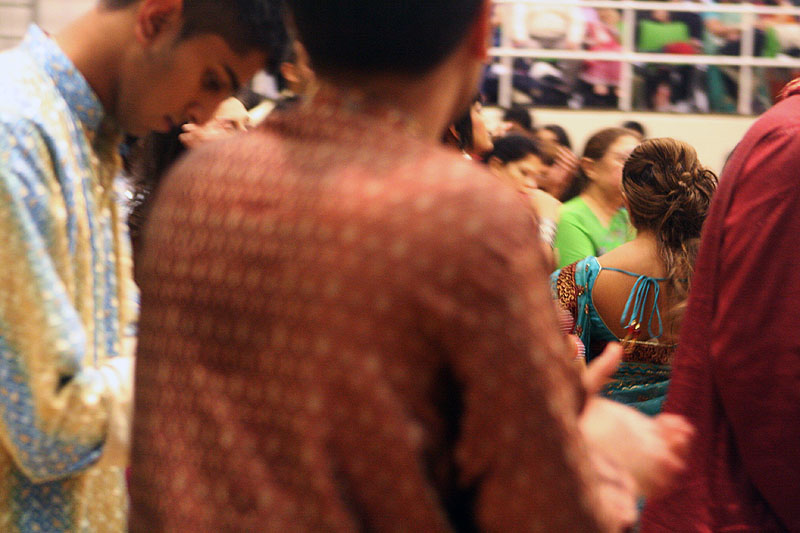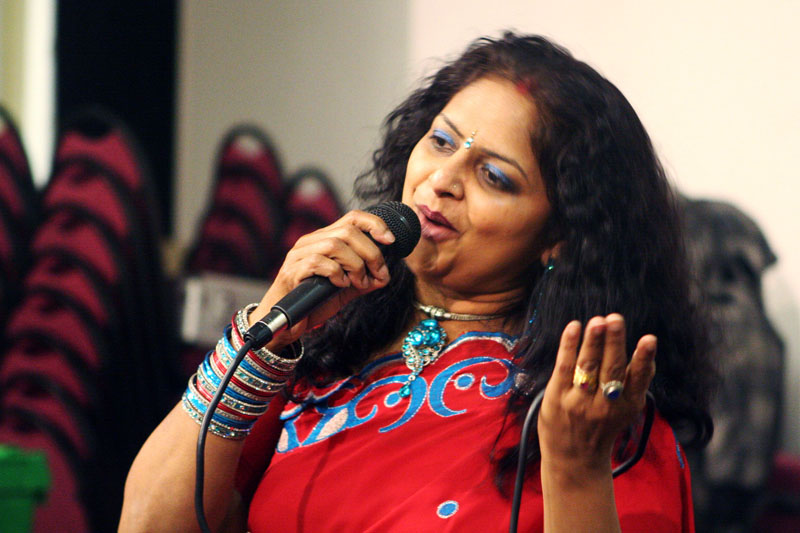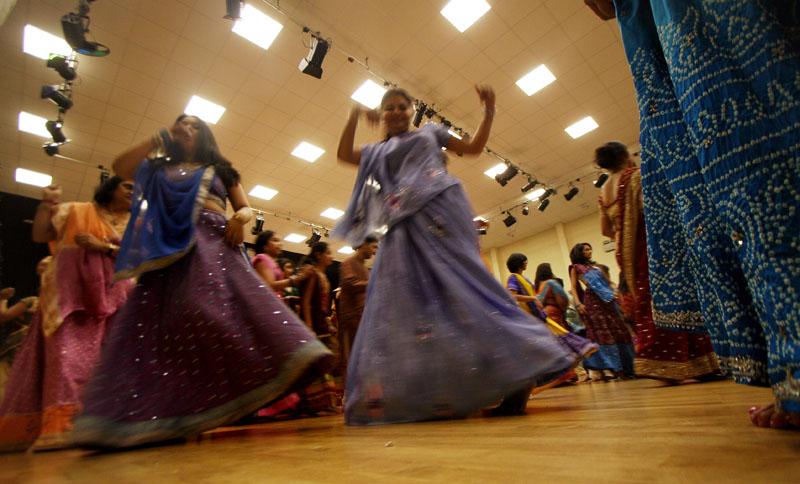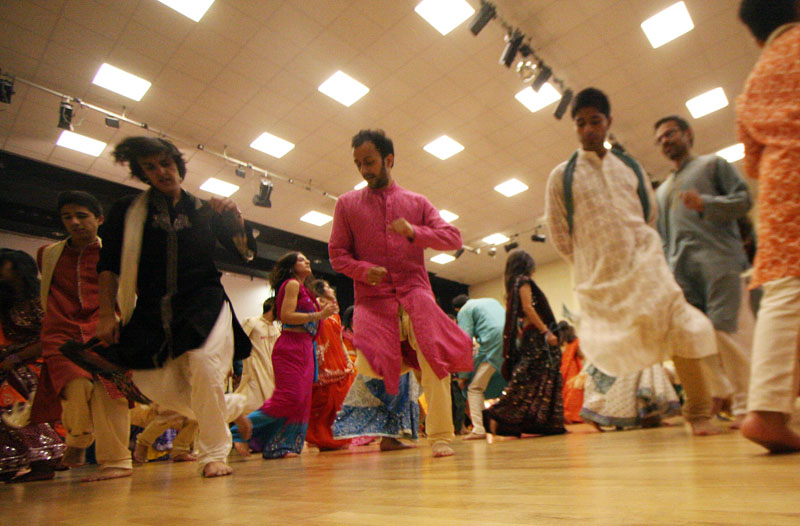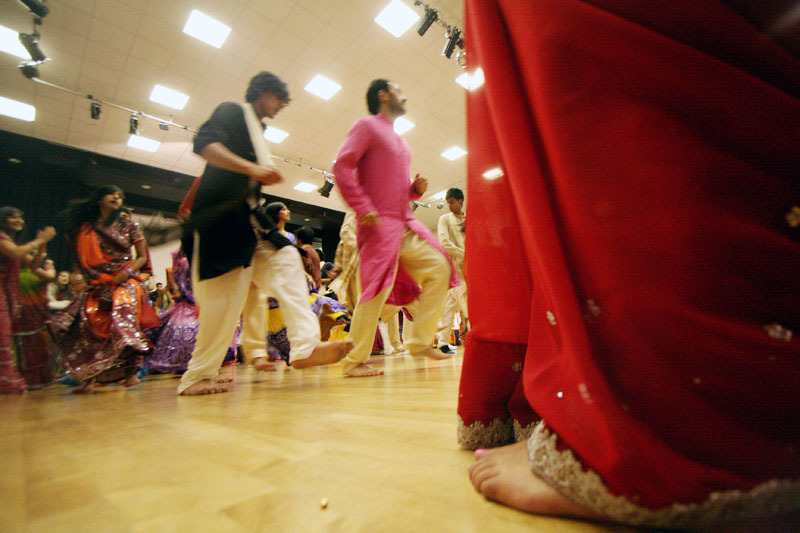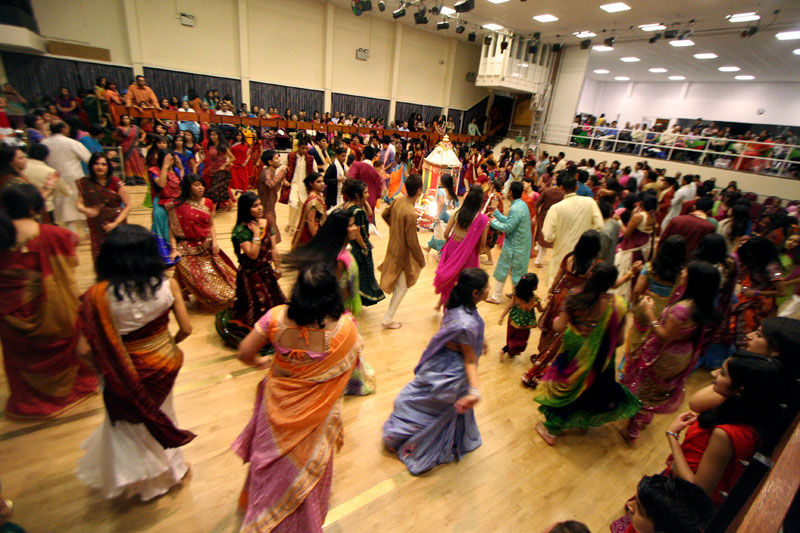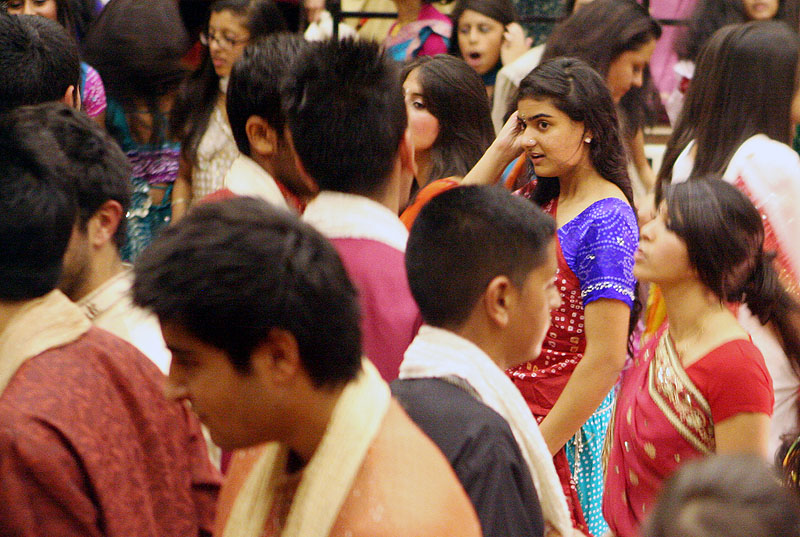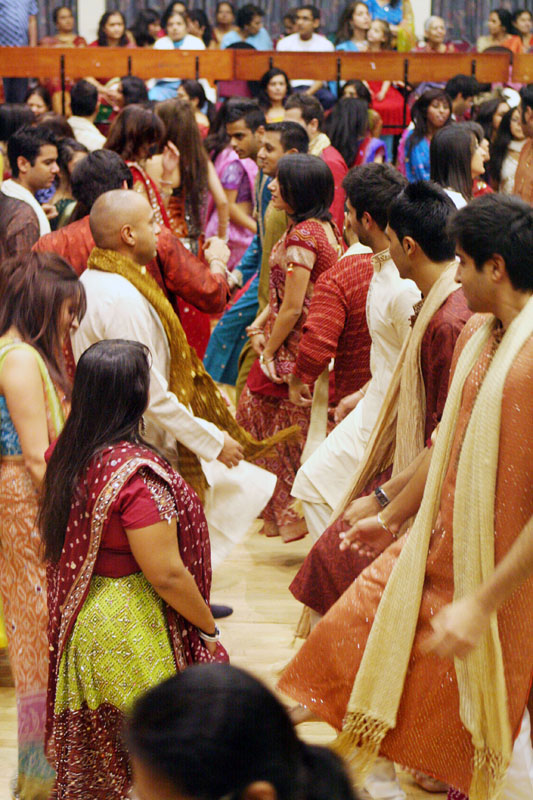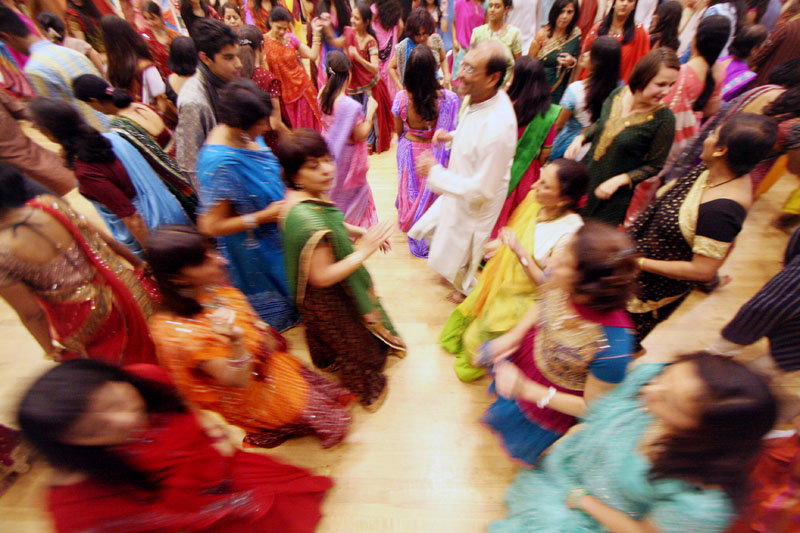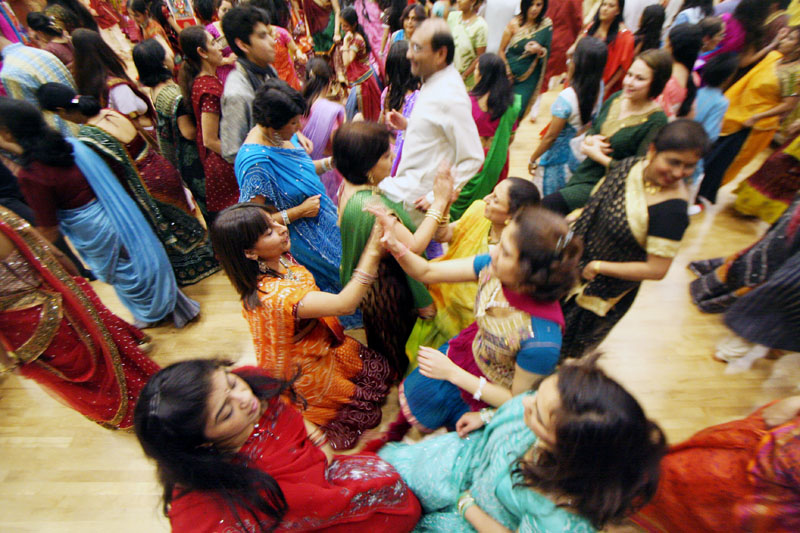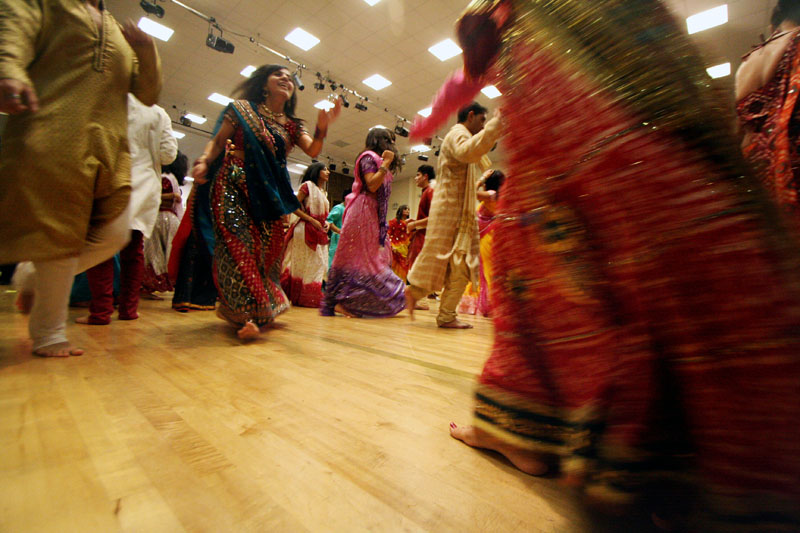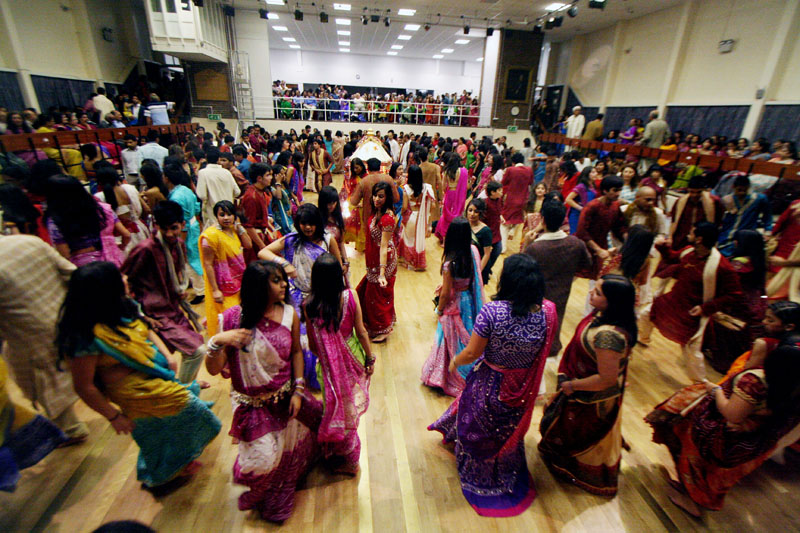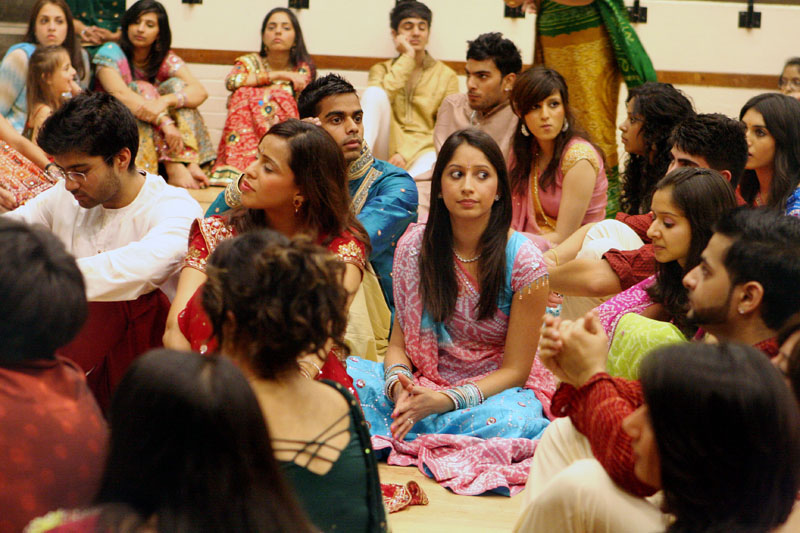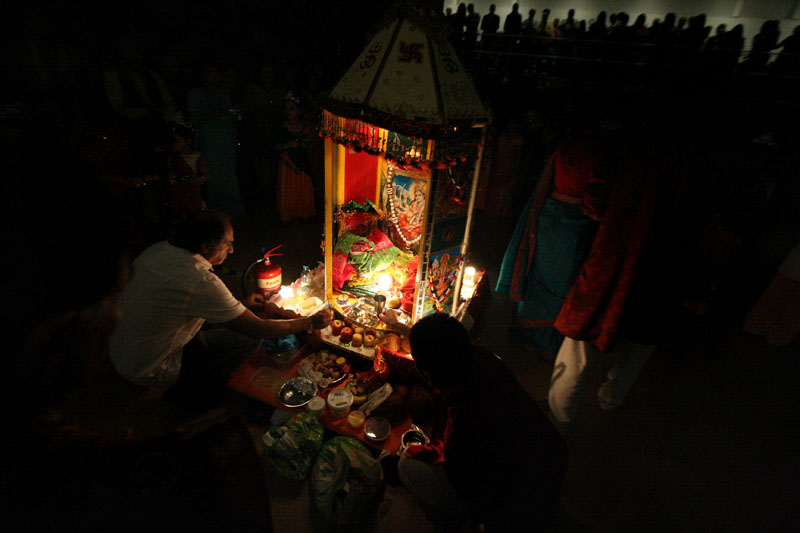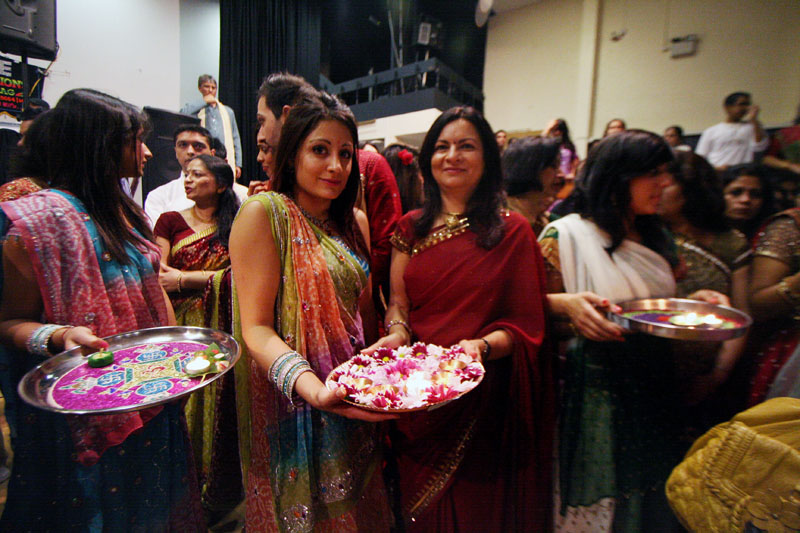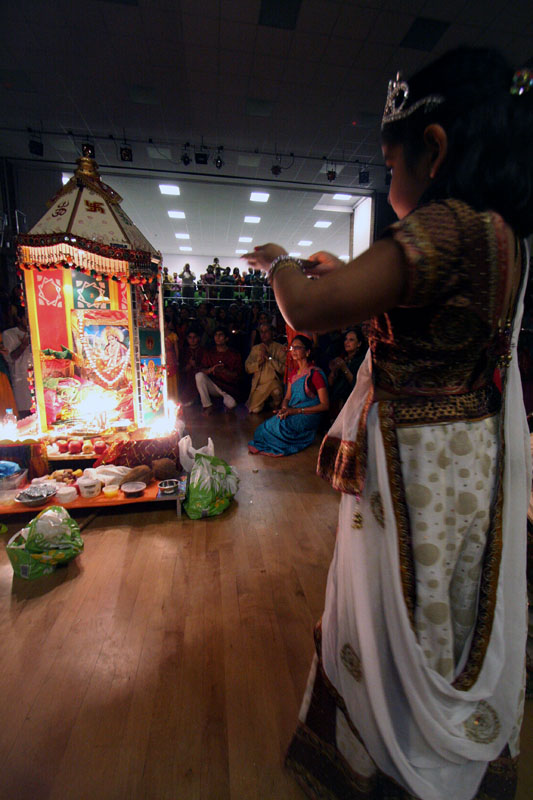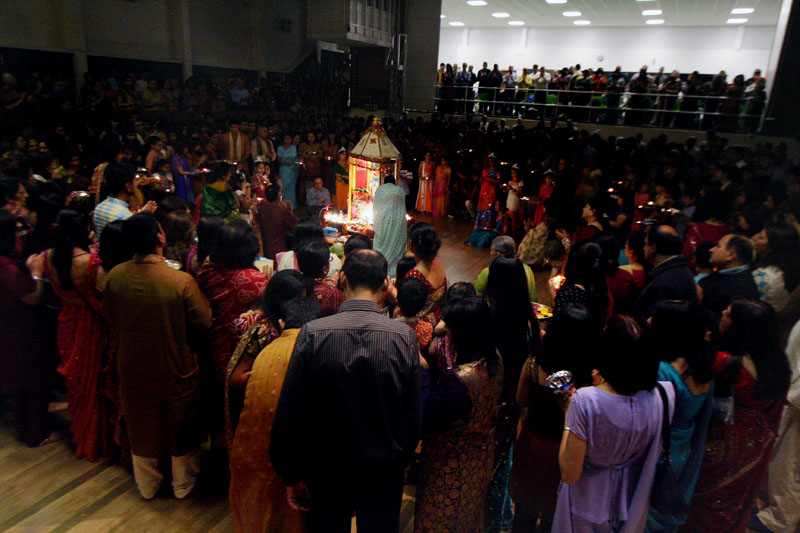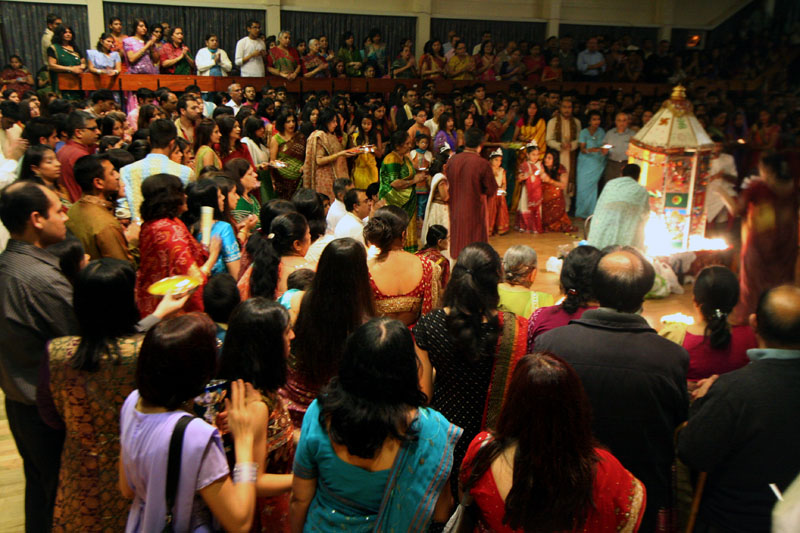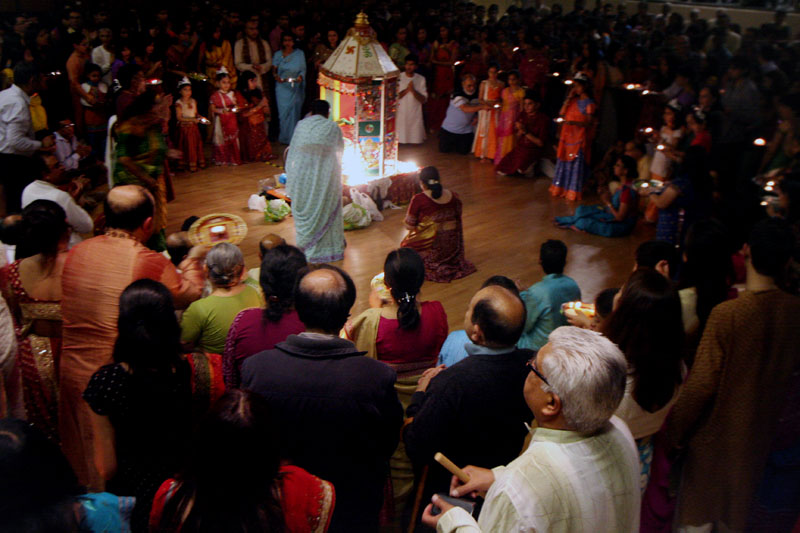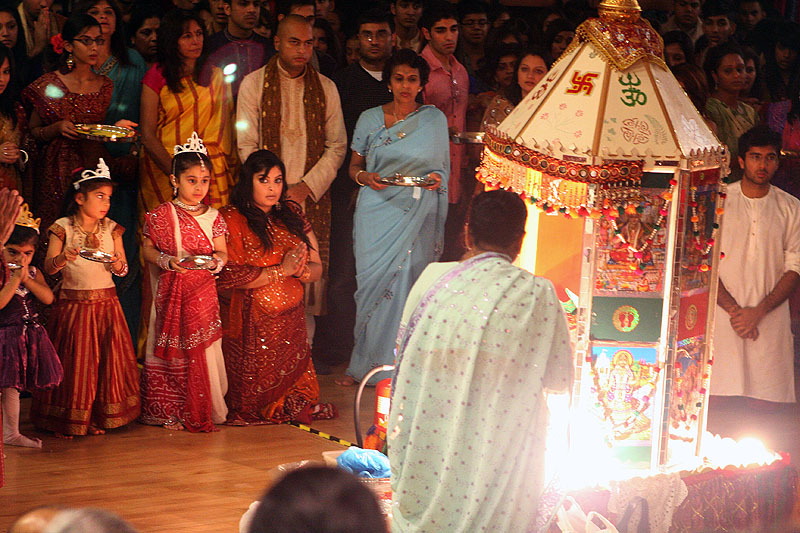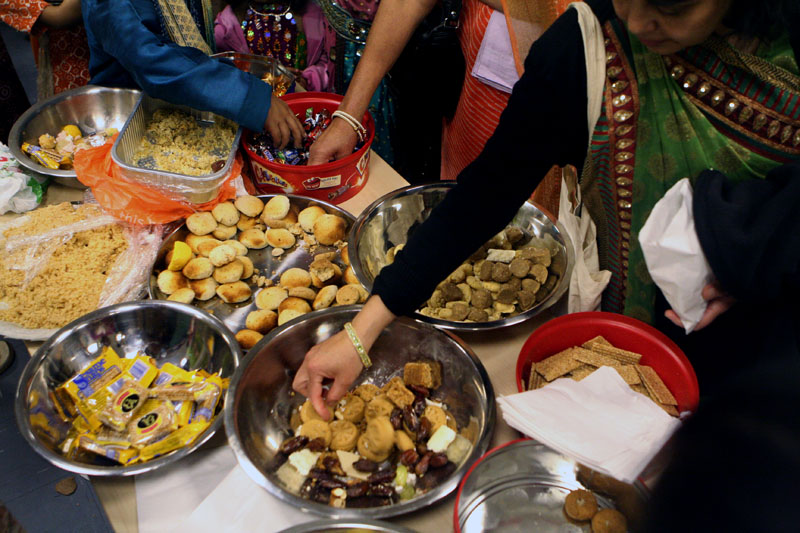Festival of Sacrifice
Eid Bakri/Eid Al-Adha – Mumbai, India
November 2010
Eid Al-Adha or Eid Bakri is a Muslim festival of sacrifice. Bakri means goat, and traditionally, a goat is sacrificed during this time. I don’t think this ritual takes place in the UK (I can’t imagine it’d be allowed – at least not in public) – Muslim friends of mine here usually get their relatives in other countries to sacrifice a goat on their behalf.
In India, the festival is widespread, and a worker of my friend in Mumbai took me to Dharavi, Asia’s largest slum area, where his neighbour was going to sacrifice a goat. Having never seen this before, I decided to tag along, despite others telling me it’s really not something I’d want to see.
Walking to the slums, it was amusing seeing that almost every shack had satellite television. I wondered if a television license is necessary like in the UK..
The goat that was to be sacrificed:
The boy in the image above was playing with it and taking it for walks. I was told that days prior to the slaughter, the goat is treated like a pet, and fed and taken care of very well.
Other goats awaiting their fate.
My friend’s worker is called Babu, and he took me to his home in the ‘slum’ to meet his wife Hasima who made me the best coffee I’ve ever had. When I entered she put all the fans on and ushered me to sit on a chair, even though everyone else sat on the floor. I don’t even think the chair was theirs. The room seemed so small, yet contained a bathing area, kitchen and bedroom. How anyone gets any privacy here is beyond me. I was touched by the hospitality, and also noticed how spotless the room was.
Back outside, the goat was about to be sacrificed.
**Warning – the following images show an animal being killed and drained of blood before being skinned and dismembered**
Children looked on curiously, almost in fascination.
I thought the goat had died minutes before, but it hadn’t. The men restrained it while the blood continued to drain.
Soon it was dead.
I would have estimated that 10 minutes had passed at this point, but the EXIF data from the images makes it 4 minutes.
The animal was then skinned while a woman began washing away the blood.
These children didn’t flinch once. It made me realise just how sheltered the richer or more ‘Westernised’ of us are. Many of those I know in Mumbai said they would not want to witness this, and couldn’t bear the thought of seeing it, with one even turning vegetarian after seeing it a few years ago.
Finally, the carcass was hung on the neighbour’s door.
I learned that the meat will be cooked and shared amongst people. Richer Muslims feed the poor with the meat from such sacrifices.
I have to say, this is not something I reckon most ‘Westerners’ would be able to stomach, based on how my friends reacted to me seeing this. I did feel a little queasy, but looking through the camera lens made me feel a little detached, as though I was looking at something on TV. Perhaps all the gorey things I’ve watched online have made me desensitised. Above all, what surprised me most was just how red the blood is, and how many children were watching. It really is a different world.
Two of the six goats that were to be sacrificed together the following day.
They invited me back to see this but I didn’t have the time, although even if I had, I wasn’t sure if I’d wanted to see six goats killed like this.
Walking back out of the slum area.
More of Mumbai to come soon..











